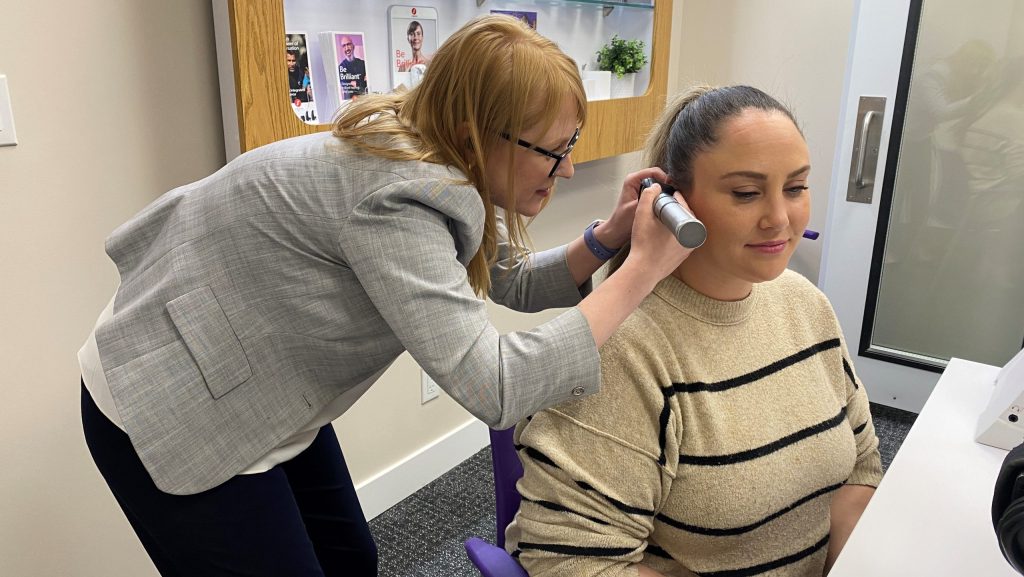CAMH looks to grow at 170-year West Queen West site of mental health facilities
Posted May 12, 2023 11:07 am.
When it comes to the history of Toronto’s West Queen West neighbourhood, mental health care and facilities like The Centre for Addiction and Mental Health (CAMH) have been front and centre for more than 170 years.
In recent years, CAMH staff have embarked on a multi-year transformation of the long-standing, 27-acre site located south of Queen Street West near Ossington Avenue.
However, the style and philosophy of care provided at CAMH today is in stark contrast with The Provincial Lunatic Asylum when it opened on the same grounds in 1850.
“This would have been in the rural outskirts and it was an asylum and a traditional asylum at that … a lot of it was about warehousing people, keeping them out of the streets,” Dr. David Gratzer, a psychiatrist at CAMH, told CityNews during a recent tour of the grounds.
In addition to overcrowding during the period, there were other concerning practices. For example, masonry walls were built around the entire property in 1861 with some patients being forced to help with the construction.
“I think many patients weren’t treated with the dignity and respect they should have been treated with,” Gratzer said.
“Some of the practices at the time we wouldn’t consider acceptable today.”
RELATED: CAMH to lead team developing youth mental health platform
He said the history is mixed since there were “many abuses in the asylum system,” but noted the establishment was about “providing people with a safe place to live.”
“My colleagues who worked here at the time, many of them meant very well. The first superintendent … actually lived on the grounds with his family in part because he wanted to show his commitment to the people who lived here,” Gratzer said.
It wasn’t until the early 1900s when the word “hospital” became attached to the facility at the time, slowly marking a shift to more medical-based care. It underwent a number of name changes and became known as the Queen Street Mental Health Centre.
With the first anti-psychotic medication not being developed until the late 1950s, Gratzer said it wasn’t until that time when a noticeable shift occurred.
“The rise of a much more biological approach or the approach we take with really other illnesses, right. So one thinks of heart disease as not being a moral failing, but somebody might have a father who had heart disease and a grandfather. Likewise, we know depression travels and family as other illnesses like schizophrenia,” he said
“Interventions then took on a different tone, more medications, more physical interventions as well over time is, we in a sense, modernize the practice of mental health care the way we’ve modernized the practice of physical health care over time.”
RELATED: CAMH tapped to lead rollout of 988 suicide crisis line
In 1998, CAMH was formed after the Queen Street Mental Health Centre, the Clarke Institute for Psychiatry, the Addiction Research Foundation and the Donwood Institute merged.
“At the time, this was pretty dramatic stuff, right? Their philosophies were different, their approaches were different,” Gratzer said.
“We have our scientists and our educators and clinicians all here working together and literally going to each other’s offices and collaborating.”
CAMH is replacing building by building, replacing dated facilities with modern amenities. The crisis and critical care building at White Squirrel Way and Queen Street West is the newest addition.
“It wasn’t that long ago when we had a few cement blocks and they were frankly not very pleasant,” Gratzer said.
“Every inpatient has [their] own private bedroom and [their] own private bathroom. We’ve got space in our emergency department is twice as big in square footage as our last emergency department.”
Currently, fundraising is underway to further redevelop Canada’s largest mental health hospital. There are plans to add a new building dedicated just to mental health research.
Integrating the community into CAMH
Gratzer said in more recent years, there has been a movement to better integrate the grounds into the community by creating more green spaces and other amenities. Neighbours are actively invited to walk on the property.
“When I started working here just over five-and-a-half years ago, I saw people walking their dogs and initially it was a little shocked. I mean it’s hospital grounds why are people walking around here? Over time, I’ve just grown so excited about it because it shows that people in this community embrace us just as we embrace them,” he said.
“This is so different than those old asylum days when literally it was walled off. We’re a part of the city, the people in the city come here — whether it’s to enjoy a nice summer’s day on a park bench or to get care to get themselves better.”
On the ground floors of CAMH buildings along Queen Street West, private businesses and commercial spaces open right onto the street.
At the Bell Gateway building, a ground-floor social enterprise company called Out of this World Cafe and Catering is open to CAMH staff in the public for takeout or through online ordering. The establishment provides job openings for people with mental health or addiction issues.
“Unemployment rates are reported to be as high as 85 per cent among our target population. Employment and training engages individuals in society, reduces dependence on social service programs and improves physical and mental health,” a sign at one of the entrances said.
The hospital has also hosted community COVID-19 vaccine clinics for people with needle phobias and anxiety.
Disspelling misconceptions on mental health care
Even though there has been a stronger focus on mental health in recent years, Gratzer said there are still many misconceptions that need to be addressed.
“One in five people over their lifetime will have a mental health problem. These problems tend to be eminently treatable,” he said.
“It’s a general rule of thumb mental health problems actually tend to be more amenable to care than physical health problems.”
Something that can raise alarm among some in the city are when notices are issued by Toronto police officers advising of “elopees” from the Ossington Avenue and Queen Street West area.
Gratzer said most times it involves people who have come into contact with the criminal justice system and are late returning.
“We appreciate the perspective of Toronto Police and the way they try and publicize these things but maybe it enhances stigma rather than decreases stigma over time. I work here [and] I feel safe here,” he said.
“People with severe, persistent mental illness are much more likely to be victims of violence than perpetrators.”
“They are here because they have mental health problems. Usually, they’re in a state of recovery, which means they get more and more passes to the community and as is the case in hospitals across the city and across the country … sometimes they’re given passes and they do not come back in a timely way.”
RELATED: CAMH receives 1st federal grant to study component of magic mushrooms as depression treatment
CAMH also provides services to people found not criminally responsible after being charged with an offence.
“When I worked in the jail system briefly, I was struck by how many people with mental health problems ended up in the jail system — not for big problems in terms of the criminal justice system, but for small problems because they were sick and they couldn’t organize themselves as an example to show up to court,” Gratzer said.
“This is a pathway for them not to spend time in jail, but to spend time getting treatment and then back into the community and back to their families.”
He said he believes fictional depictions of mental health issues have fuelled misconceptions and that more people need to think of mental health like physical health.
“If somebody has high cholesterol, we recommend a lipid-lowering drug, right? You need to treat about 100 people with a cholesterol-lowering drug in order to prevent one bad outcome like a heart attack,” Gratzer said.
“When we talk about depression and depression care, if you treat say two or three people with cognitive behavioural therapy, which is one of those short-focus psychotherapies, they can have robust recovery.”








